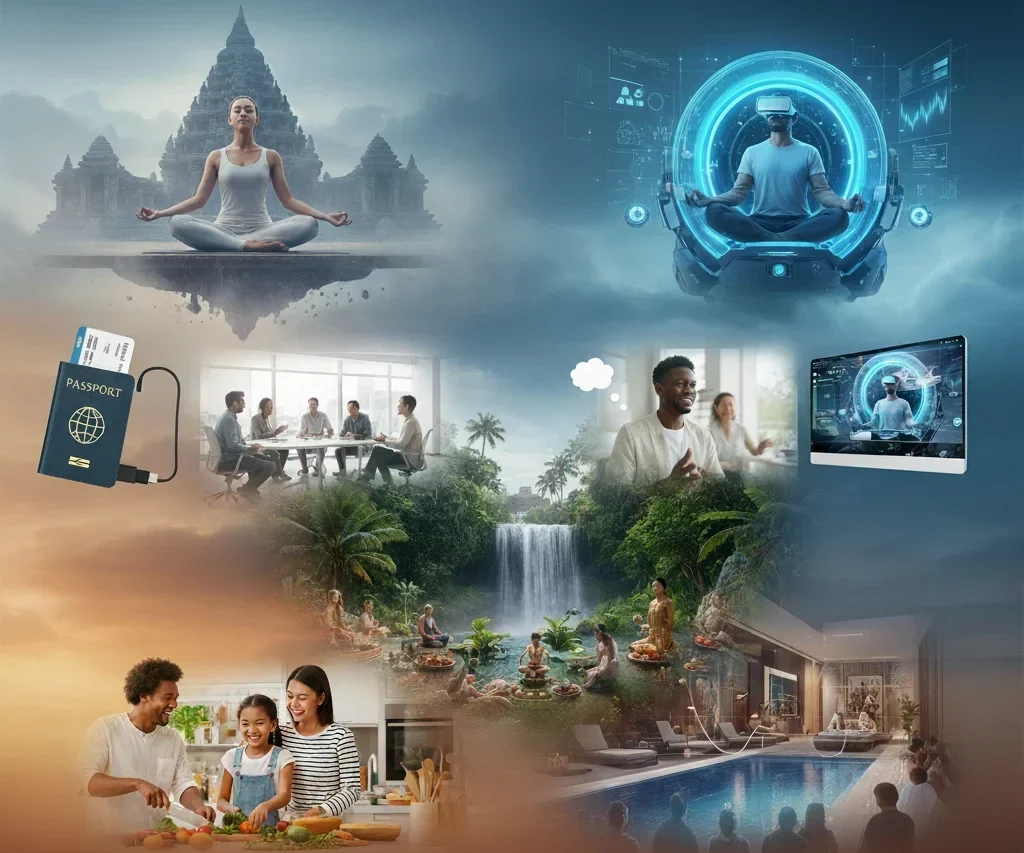The Wellness Economy, The Industry That Earned Trillions
The Wellness Economy The Industry That Earned Trillions By Minahil Rasool Once associated mainly with yoga, pilates, organic food, and spa retreats, the wellness industry has grown into something far more expansive. By blending ancient healing traditions with cutting-edge technologies, it has reshaped how people live, work, relax, and even travel. What was once a luxury is now a global priority. As of 2025, the wellness industry has reached an estimated value of $5 trillion, with projections suggesting even greater growth in the years ahead. It has evolved from being a niche lifestyle category into a central influence on everyday decisions, from how we eat and exercise to how we manage stress, careers, and relaxation. This shift reflects a broader cultural change, where people see health not merely as the absence of illness but as a holistic investment in physical, emotional, and mental well-being. A Post-Pandemic Awakening The COVID-19 pandemic accelerated this transformation, highlighting vulnerabilities in both physical and mental health. Isolation, lockdowns, and digital fatigue intensified struggles with anxiety, stress, and depression, forcing wellness to move from the margins to the mainstream. Practices like yoga, pilates, journaling, and therapy apps became essential for coping, while tracking sleep and monitoring blood levels became part of daily routines. Preventive care and mental resilience became cornerstones of modern living. Breaking the Stigma Around Mental Health This period also dismantled long-held stigmas surrounding mental health. Conversations about anxiety, burnout, and depression, once avoided, became more open and normalized. In response, corporations invested heavily in employee wellness programs, offering therapy access, meditation sessions, and mental health leave. Digital platforms further democratized access, making mental health support available to millions worldwide. What was once taboo became both a profitable and socially impactful frontier in the wellness economy. The Rise of Wellness Tourism With greater awareness came a demand for experiences that nurture both body and mind, giving rise to wellness tourism, now a booming multibillion-dollar subsector. Travelers are no longer drawn only to luxury spas, but instead seek transformative journeys that combine relaxation with cultural immersion and healing practices. From Ayurvedic treatments in India to Mediterranean spa retreats and detox programs in South America, vacations are increasingly viewed not as escapes but as opportunities to recharge and transform. The Debate Healthier People or Wealthier Industry? The wellness boom, however, has sparked debate. While it has expanded access and awareness, critics argue it still caters largely to the affluent, raising concerns of elitism. Expensive detox retreats, supplements, and diet trends often promote a lifestyle out of reach for many, creating a paradox between authentic wellness and curated aesthetics. This raises the question: are we truly becoming healthier, or is the industry simply becoming wealthier? Despite these contradictions, the momentum is undeniable. The wellness industry continues to expand rapidly as people increasingly view health as their greatest asset. The focus has shifted from merely living longer to living better. Whether through mindfulness, biohacking, or wellness-focused travel, the global wellness economy is redefining what it means to thrive in the modern world.


